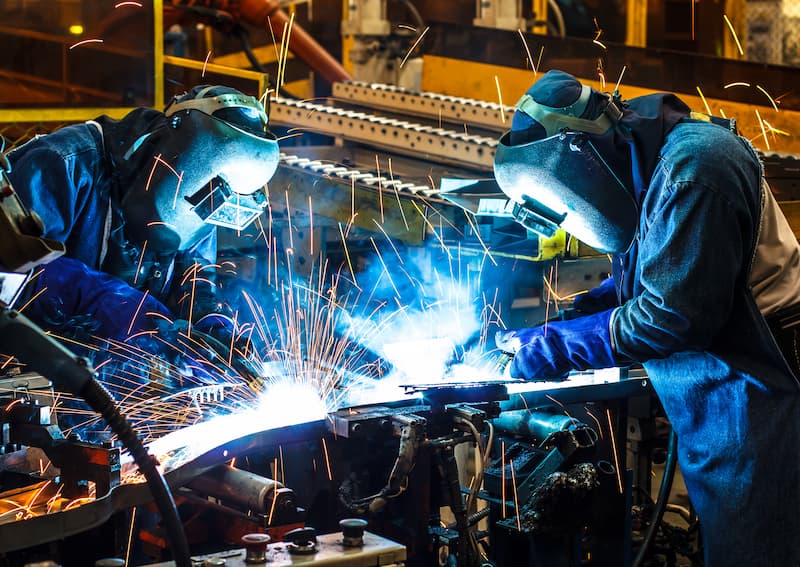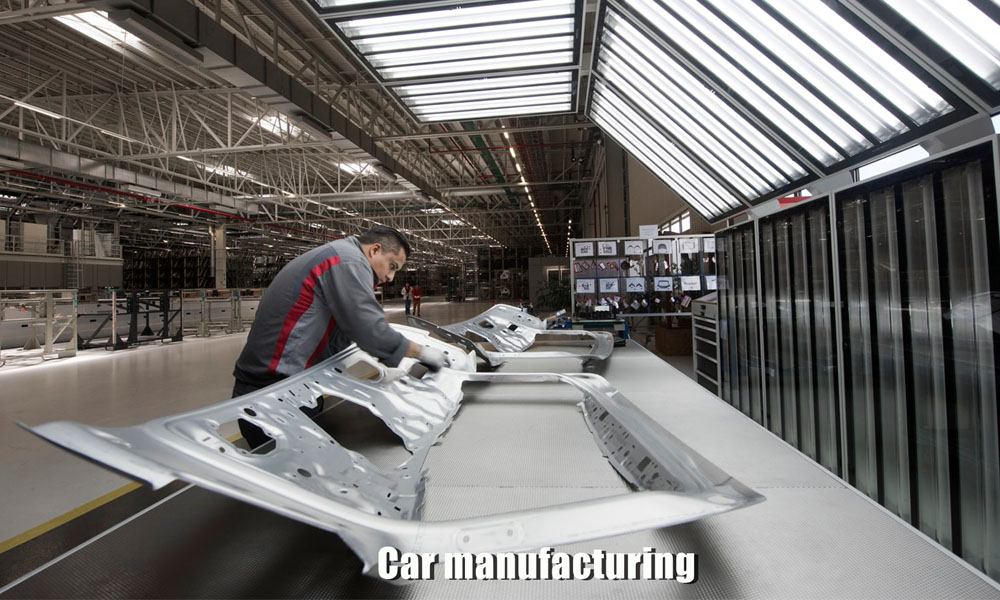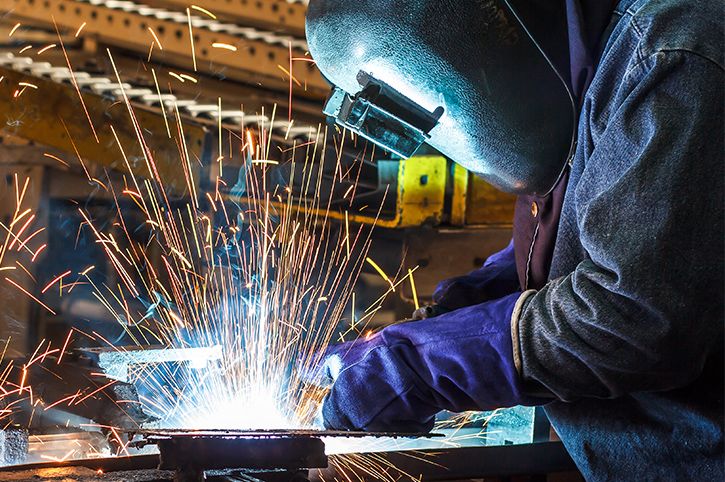Common Welding Repair Service Issues and Exactly How to Address Them Properly
Welding fixings often come across a variety of concerns that can endanger the honesty of the end product. Usual troubles consist of poor penetration, porosity, and imbalance, to name a few. Each defect offers special difficulties that call for details approaches for resolution. Comprehending these problems is necessary for welders intending to enhance their outcomes and abilities. This conversation will discover these usual welding repair concerns and effective techniques to address them.
Poor Infiltration
Poor penetration takes place when the weld steel falls short to totally fuse with the base product, leading to weak joints and potential structural failings. This problem often stems from insufficient warmth input, wrong electrode angle, or incorrect welding rate. Welders might run into inadequate infiltration because of a miscalculation of the needed parameters for a specific material thickness or kind. Furthermore, contamination on the base material's surface can impede reliable bonding, exacerbating the trouble. To deal with insufficient infiltration, welders need to guarantee appropriate setups on their equipment and preserve a clean work surface area. Regular examination of welds is suggested to determine any type of shortages early, enabling timely improvements and the prevention of jeopardized architectural honesty in welded assemblies.
Porosity
Porosity is a common flaw in bonded joints that manifests as little gas bubbles caught within the weld steel. This issue can endanger the stability of the weld, bring about reduced stamina and possible failure under stress. Montana Mobile Welding and Repair Belgrade Welding. Porosity usually arises from contamination, wetness, or incorrect welding strategies, which allow gases to leave into the molten weld pool. To resolve porosity, welders should ensure correct surface area preparation, keep a tidy workplace, and make use of ideal welding specifications. In addition, choosing the appropriate filler product and shielding gas can reduce gas entrapment. Normal evaluation and screening of welds can aid recognize porosity early, assuring prompt restorative activities are taken, therefore protecting the top quality and integrity of the welded structure
Misalignment
Imbalance in welding can arise from numerous variables, consisting of incorrect setup and thermal development. Understanding the source is essential for reliable resolution. Numerous correction techniques are readily available to realign parts and assure architectural honesty.
Causes of Imbalance
Welding misalignment usually comes from a variety of underlying concerns that can compromise architectural stability. One key reason is improper fit-up of elements before welding, which can cause gaps and uneven surfaces. Variants in thermal growth throughout the welding procedure can also cause distortion, specifically if the products being signed up with have different coefficients of expansion. Additionally, poor securing and fixturing may stop working to hold components safely in position, leading to activity during welding. Improperly kept tools, consisting of welding machines and devices, might introduce incongruities in the weld bead, further adding to misalignment. Operator error, stemming from not enough training or experience, can also play a significant duty in developing misaligned welds.

Adjustment Methods Readily Available
Addressing imbalance efficiently requires a mix of restorative methods customized to the specific issues at hand. One typical approach is the use of jigs or components to hold parts in the proper position throughout welding, guaranteeing constant positioning. In addition, preheating the materials can aid lower distortion and enhance fit-up. For significant misalignment, mechanical realignment techniques, such as utilizing hydraulic jacks or clamps, can be utilized to fix the placement prior to welding. Post-weld warmth therapy may also be necessary to ease anxieties created by imbalance. Ultimately, cautious assessment and adjustment during the configuration stage can avoid imbalance problems from ending up being considerable troubles, promoting a smoother welding procedure and improving general architectural stability.
Distortion
Distortion is a typical difficulty in welding that can occur from different aspects, including irregular cooling and heating. Understanding the reasons for distortion is vital for implementing reliable avoidance techniques. Addressing this issue not only improves structural stability but additionally enhances the overall high quality of the weld.
Reasons for Distortion
When based on the extreme heat of welding, products usually undergo changes that can result in distortion. This sensation mostly arises from thermal expansion and tightening throughout the welding process. As the weld area warms up, the material expands; upon air conditioning, it contracts, which can develop interior stresses. Furthermore, unequal home heating across a work surface can exacerbate these anxieties, leading to warping or bending. The sort of product also plays a substantial duty; steels with varying thermal conductivity and coefficients of growth may respond in different ways, resulting in uncertain distortions. Additionally, bad joint style and poor fixturing can add to imbalance throughout welding, increasing the possibility of distortion. Comprehending these reasons is essential for reliable welding repair service and prevention approaches.
Avoidance Techniques
Effective prevention methods for distortion during welding concentrate on regulating warmth input and ensuring proper joint design. Preserving a constant heat input helps to reduce thermal expansion and contraction, which can bring about distortion. Making use of techniques such as pre-heating the workpiece can likewise lower the temperature slope, advertising uniform home heating. Furthermore, choosing appropriate joint designs, such as T-joints or lap joints, can boost security and decrease anxiety focus. Implementing proper fixturing to secure the workpieces in location better help in keeping positioning throughout the welding process. Finally, staggered welding series can disperse warmth extra uniformly, stopping localized distortion. By using these methods, welders can considerably decrease the chance of distortion and improve the general top quality of their welds.
Fracturing
Cracking is an usual issue encountered in welding repairs, commonly resulting from different variables such as incorrect cooling rates, product option, or poor joint prep work. The event of fractures can considerably compromise the integrity of the weld, bring about prospective failings during operation. To address this concern, welders need to initially examine the origin triggers, guaranteeing that materials are suitable and suitably chosen for the details application. Additionally, regulating the air conditioning price during the welding procedure is vital; quick air conditioning can cause tension and bring about breaking. Appropriate joint design and prep work additionally contribute to minimizing the threat. Implementing these strategies can boost weld top quality and durability, ultimately minimizing the chance of splitting in battery welder completed weldments.

Insufficient Blend
A significant concern in welding repair gasless mig welder work is insufficient fusion, which occurs when the weld metal does not sufficiently bond with the base material or previous weld passes - Montana Mobile Welding and Repair Belgrade Fabrication. This flaw can cause weak points in the joint, potentially jeopardizing the integrity of the bonded framework. Aspects contributing to incomplete blend consist of insufficient warmth input, improper welding method, and contamination of the surfaces being signed up with. To address this problem successfully, welders must guarantee appropriate pre-weld cleansing and surface area preparation, along with adjust their welding parameters to attain appropriate infiltration and blend. Regular inspection during the welding process can also help recognize insufficient blend early, enabling timely rehabilitative procedures to enhance the overall high quality of the weld
Overheating
While welding fixings can improve architectural integrity, overheating provides a substantial obstacle that can result in material degradation. Extreme heat during welding can change the mechanical buildings of steels, causing minimized toughness, enhanced brittleness, and warping. This sensation is specifically vital in high-stress applications where architectural reliability is critical. Identifying overheating can entail aesthetic inspections for discoloration or distortion, along with keeping track of temperature level during the welding process. To mitigate the threats connected with getting too hot, welders should use appropriate techniques, such as regulating warmth input, readjusting find travel rate, and using ideal filler materials. Additionally, implementing pre- and post-weld heat treatments can aid restore material residential properties and enhance the total high quality of the repair, making certain lasting efficiency and security.
Regularly Asked Questions
What Are the Usual Indications of a Welding Defect?

Just How Can I Examine My Welds for High quality?
To examine welds for top quality, one can utilize visual examinations, ultrasonic screening, and radiographic approaches. Each method ensures structural honesty, determines flaws, and verifies adherence to specified criteria, eventually boosting the reliability of the welded joints.
What Safety and security Preventative Measures Should I Take While Welding?
When welding, one need to focus on security by putting on ideal individual safety devices, ensuring appropriate air flow, securing combustible materials away, keeping a clean workspace, and recognizing surroundings to avoid mishaps and injuries.
Can I Fix a Weld Without Renovating the Entire Joint?
Fixing a weld without redesigning the whole joint is possible, depending upon the damage (Welding). Methods such as grinding, including filler product, or using a welding procedure can effectively resolve particular imperfections while preserving the surrounding structure
What Tools Are Crucial for Reliable Welding Repair Works?
Necessary tools for efficient welding repair services include a welding device, wire brush, grinder, safety equipment, clamps, and filler products. Each tool plays an important role in ensuring high quality and safety and security during the fixing process. Porosity generally emerges from contamination, wetness, or improper welding methods, which permit gases to run away right into the liquified weld swimming pool. Inadequately maintained tools, including welding devices and devices, may introduce disparities in the weld grain, more adding to imbalance. When subjected to the intense warm of welding, products frequently go through adjustments that can lead to distortion. Breaking is an usual concern experienced in welding repair work, typically resulting from numerous aspects such as inappropriate air conditioning prices, material option, or insufficient joint preparation. A significant issue in welding fixings is incomplete combination, which occurs when the weld metal does not adequately bond with the base product or previous weld passes.